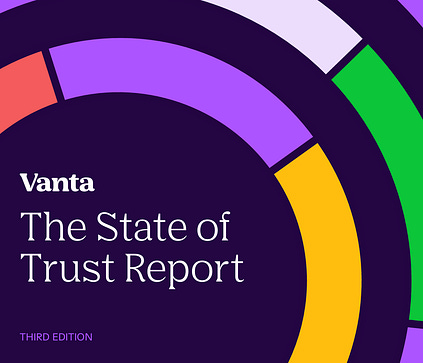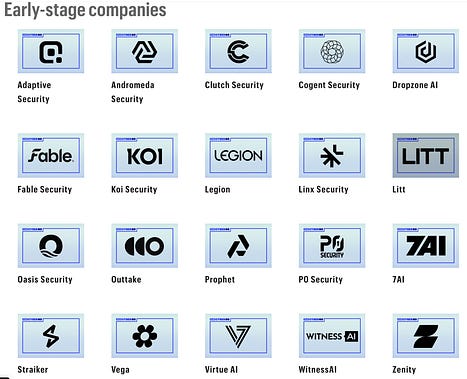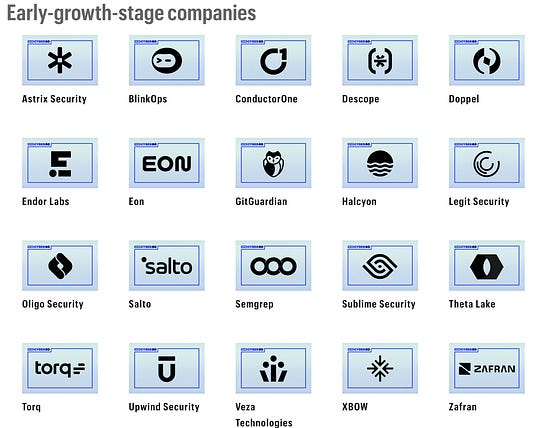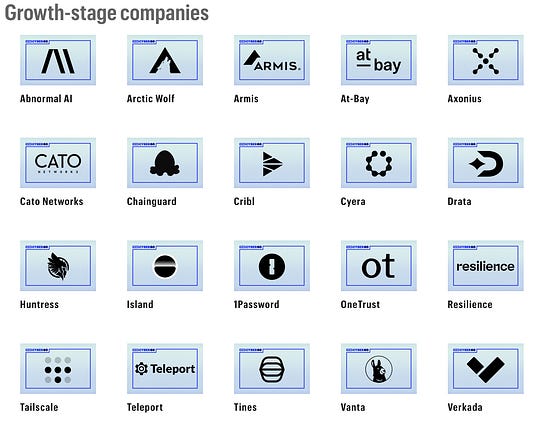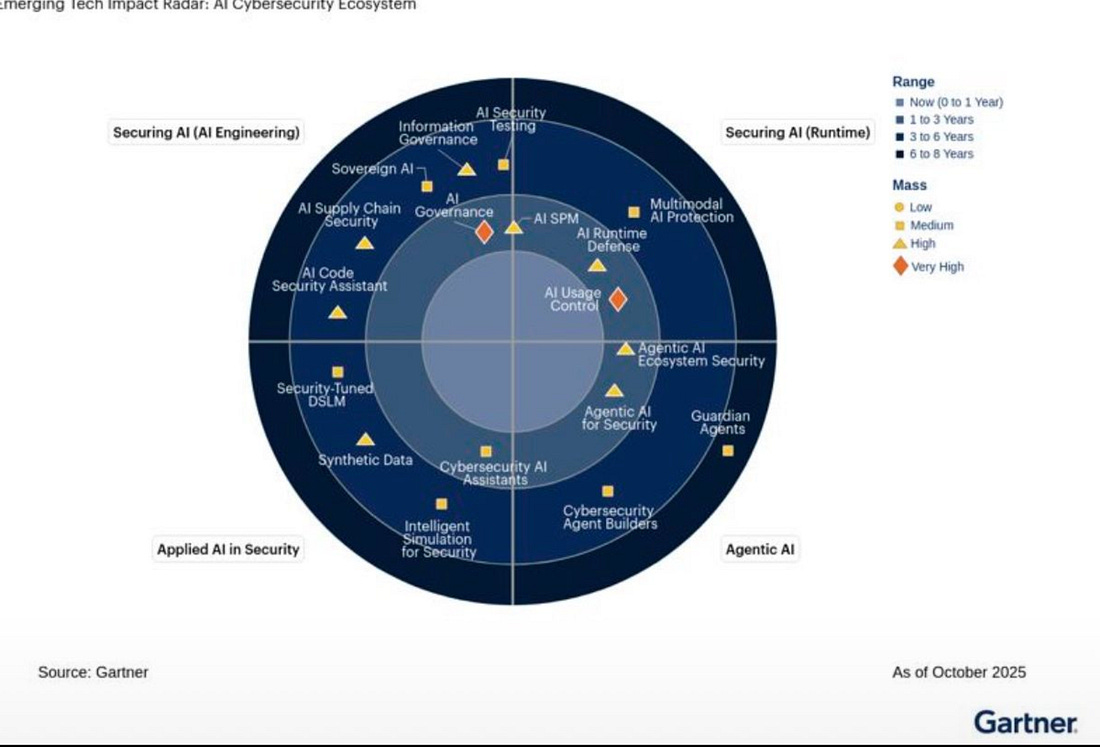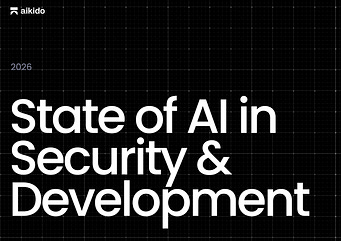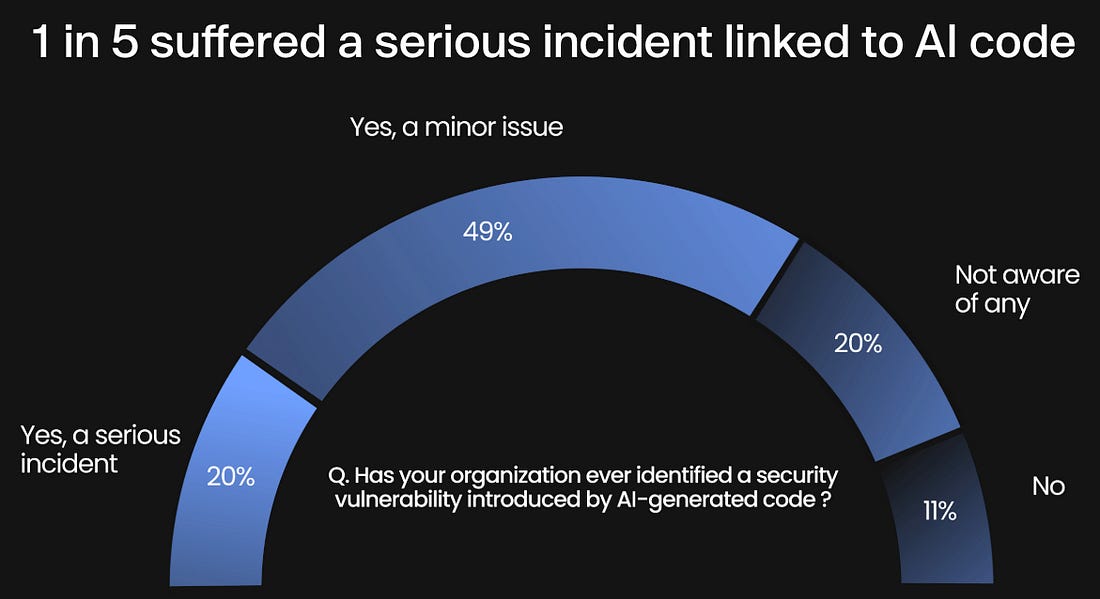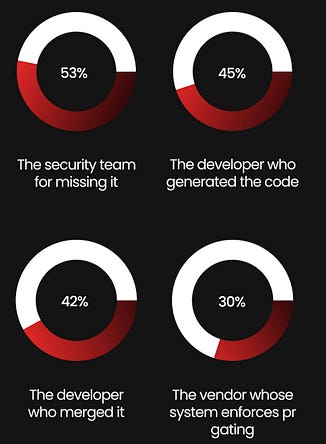Resilient Cyber Newsletter #71
- Chris Hughes from Resilient Cyber <resilientcyber@substack.com>
- Hidden Recipient <hidden@emailshot.io>
Resilient Cyber Newsletter #71The Future of American Power, AI Bubble (Or Not?), Fortune Cyber 60, Enterprise Browsers, NVD/CVE Crisis & State of AI in Security & DevelopmentWelcome!Welcome to Issue #71 of the Resilient Cyber Newsletter. We’re cruising along towards the holiday season, all while still in a U.S. Government shutdown. In this issue, I share a wealth of great resources, including a deep discussion about the future of American power, competing debates about whether we’re in an AI bubble, the rise of Enterprise Browsers, and the continued impact of AI in Security and Development. So, I hope you enjoy the discussions, resources, and analysis as much as I did! Interested in sponsoring an issue of Resilient Cyber? This includes reaching over 40,000 subscribers, ranging from Developers, Engineers, Architects, CISO’s/Security Leaders and Business Executives Reach out below!
Cyber Leadership & Market DynamicsThe Future of American PowerWhile not strictly focused on cyber, the conversation between Bari Weiss and Palmer Lucky of Anduril was one I found interesting due to its broad scope, encompassing technology, procurement, nation-state conflicts, innovation, AI, and more. Suppose you’re interested in these topics and have been paying attention to the U.S. National Security and Technology landscape, especially in the current administration. In that case, you will find this conversation as interesting as I did.  Is there an AI Bubble?One question and topic that has dominated conversations the last several months is whether we’re in an AI bubble, the implications if we are, and strong opinions on both side of this debate. I recently shared diagrams showing the outsized role AI has played in the U.S. GDP and growth in 2025, and we recently saw NVIDIA hit an insane $5 TRILLION market cap. This conversation from the a16z podcast was one I found interesting, as they debated the question and went on to claim the parallels to the current AI hype and prior technology waves such as the early days of the Internet and Fiber are outright incorrect. One takeaway quote👇 “The year 2000 was defined by “dark fiber,” where a staggering 97% of laid fiber optic cable sat unused, a monument to speculative overbuilding. Today, however, there are “no dark GPUs.  Building Tomorrow’s Transformational Companies - Sequoia Launches New Seed and Venture FundOne of the industry’s largest VC firms, Sequoia, announced its latest vendor fund focusing on seed and early-stage founders. The shared insights from their team, including key themes and focus areas, and while I won’t list them all, some jump out as being relevant to Cyber and adjacent industries:
Fortune Announces Cyber 60Fortune recently announced their “Cyber 60”, which is described below:
The list features some amazing teams, many I’ve been lucky enough to collaborate, including Endor Labs, where I serve as the Chief Security Advisor, as well as other teams I collaborate with as an advisor, such as Astrix and Prophet, and others I’ve gotten to work with via Resilient Cyber, such as Chainguard, Vanta and Zafran. It’s a testament to the amazing teams and momentum these organizations and leaders have built. Inside FedRAMP 20x: GSA’s Pete Waterman Talks Speed, Safety & AutomationI recently participated in an episode of Resilient Cyber, where I delved into FedRAMP and FedRAMP 20x, and also attended a webinar with Chainguard, exploring the same topics from multiple angles. That’s why I thought it would be timely to share a recent interview from GovCast with the FedRAMP Director Pete Waterman, who discusses all things FedRAMP 20x.  From Chaos to Capability: Building the U.S. Market for Offensive CyberIt’s a key question if the U.S. government outsources its cyberattacks, and as it turns out, it already does. Much of what gets discussed in the cybersecurity ecosystem focuses on defense and defenders. Rightfully so, as organizations struggle with everything from mounting vulnerability backlogs to supply chain incidents and even nation-state attacks.
How Palo Alto and CyberArk Will Reshape The Future of Identity SecurityPalo Alto Networks (PANW) made headlines this year when they made a massive identity-focused acquisition of CyberArk. But, what are the implications of this acquisition by PANW and what will it do to shape the future of identity security? My friend Francis Odum dug into that topic in a recent piece by Jocelyn Lee and himself on the Software Analyst Substack. The piece dives into the acquisition and combination of PANW and CyberArk and the implications for identity security, as well as some of the organizations competitors and potential impacts in key identity security topics such as PAM, Secrets Management and more, as well as the integration into PANW’s security platform. The Rise of the Enterprise BrowserPeople often confuse enterprise browsing with an Enterprise Browser. The truth is, they are not the same. The latter is a purpose-built platform with security as a foundation. Enterprise browsers offer tremendous opportunities to consolidate complex and disjointed security technology stacks, providing potential to reduce both costs and organizational risks. AIAI Double Edged SwordAI is a double edged sword as we know. Both needing to be secured and offering value for security. This is an interesting chart from Gartner showing the different niches as well as how far away they speculate them to be. Why AI Isn’t Delivering ROI - And Three Fixes That Actually WorkRecent stories of AI failing to delivery value and many organizations struggling with widespread adoption and ROI beyond pilots, this piece from my friend Steve Wilson was timely. Steve discusses how organizations should be building with, not just “adopting” AI for the sake of adoption, to avoid being stuck in “pilot purgatory”. He lays out three key points:
Federal Search Warrant for ChatGPT PromptsIn the first-known warrant targeting OpenAI for user prompts in the history of ChatGPT, news broke that a warrant was filed for child-exploitation investigators within DHS. They are seeking two prompts submitted by an anonymous user to ChatGPT and it is the first known federal search warrant in the U.S. compelling ChatGPT prompt-level data from OpenAI. As shared on LinkedIn from Alan Robertson where I came across this news, this means prompts can be treated as evidence and are potentially not ephemeral or private entries in a chat session with external AI service providers and can be pursued by law enforcement. Practical LLM Security Advice from NVIDIA AI Red TeamI recently came across an excellent post from NVIDIA’s AI Red Team (AIRT) sharing practical recommendations around LLM security, including common vulnerabilities and security weaknesses that can be addressed to bolster LLM security. They include:
AppSecThe NVD and CVE Crises Are Far From OverWhile the headlines have calmed down a bit regarding the near collapse of the NVD due to a funding lapse and its ongoing backlog, along with the quickly fracturing CVE ecosystem, things are far from solved. SIEM Next-Gen 2.0We see a lot of folks pursuing innovations for the SIEM. -From adding AI-native capabilities to covering activities such as Detection-as-Code, automation and more. This piece from Andrew Green lays out a matrix of next-gen capabilities, from legacy to what he calls “too-next gen”. It covers both features and architectural differences among the vendors and their respective areas of focus. State of AI in Security & DevelopmentIf you’re like me, you’re a sucker for insightful reports and analysis. That’s why Akido’s “State of AI in Security & Development” caught my attention. It dives into the intersection of AI and AppSec and draws insights from 450 security leaders around the globe. They found that 1 in 5 suffered a serious incident linked to AI code: There’s also a lot of confusion of who should actually be responsible for the security of AI coding, with some pointing at the security team, others pointing at developers and some blaming vendors: The developer tax from security continues, with 15% of engineering time being lost to chasing down scanning alerts, false positives and triage of findings, amounting to an insane $20 million per year for a 1,000 dev organization: Despite of all the chants of “built in not bolted on!” security still is an afterthought or something that is dismissed, with 2/3 of the respondents stating they bypass security, or dismiss findings and fixes: This report is full of great insights, and I may do a standalone deep dive on it given how critical the topic of AI, Development and AppSec is in the current era of our industry. Importing Phantoms: Measuring LLM Package Hallucination VulnerabilitiesIt’s undeniable that LLMs have and will continue to change what modern software development looks like fundamentally. Rapid adoption, productivity gains, and being used for an outsized portion of modern code writing.
Invite your friends and earn rewardsIf you enjoy Resilient Cyber, share it with your friends and earn rewards when they subscribe. |
Similar newsletters
There are other similar shared emails that you might be interested in:

